Substitutes for Corn Flour: 12 Best Alternatives +FAQs!
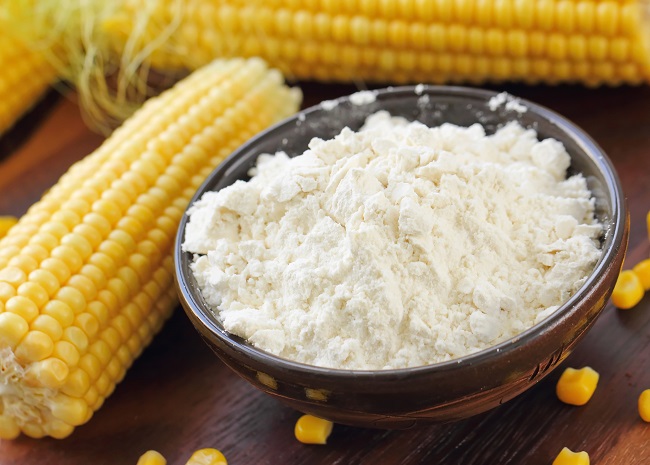
Corn flour is a common ingredient in most kitchens. It is used by cooks and bakers alike. Corn flour is my go-to breading ingredient since it adds a flavorful bite to fried foods. Aside from that, it’s an excellent thickening for stews and soups that don’t overpower the flavor.
However, there are occasions when we run out of cornflour, and what can we do about it? It’s comforting to know that suitable corn flour replacements are on the market and they will come to the rescue.
Cornstarch, rice flour, wheat flour, potato flour, all-purpose flour, or some of the following goods work well as corn flour alternatives.
Let’s look at how these replacements might be used in place of conventional Corn Flour in the kitchen.
Substitutes for corn flour
Cornflour can be successfully replaced with the following substances. So, please choose your favorite and save it.
No.1 Cornstarch

To begin, let’s distinguish between corn flour and cornstarch. Cornstarch is the starchy component of a corn kernel that results in a white powdery texture. Corn flour is yellow in color, thicker, and a little gritty in texture.
Don’t be perplexed if you try to buy them in the grocery shop. It all boils down to the label. If it reads corn flour on the label, it’s cornflour, not cornstarch.
It’s also worth noting that when swapping one for the other, both can’t serve the same purpose in some meals.
Corn flour lacks gluten, making some bread crumbly and dense, but cornstarch is more commonly used to thicken sauces.
When you’re out of cornflour, you can use cornstarch as a breading for your fried items to stay on track with your “gluten-free” diet. The proportions remain the same; however, when adding cornstarch, use cold water to dilute it properly.
Argo’s cornstarch is my go-to brand. It’s a well-known brand that I’ve relied on since I first learned to cook.
No. 2 Flour made from rice
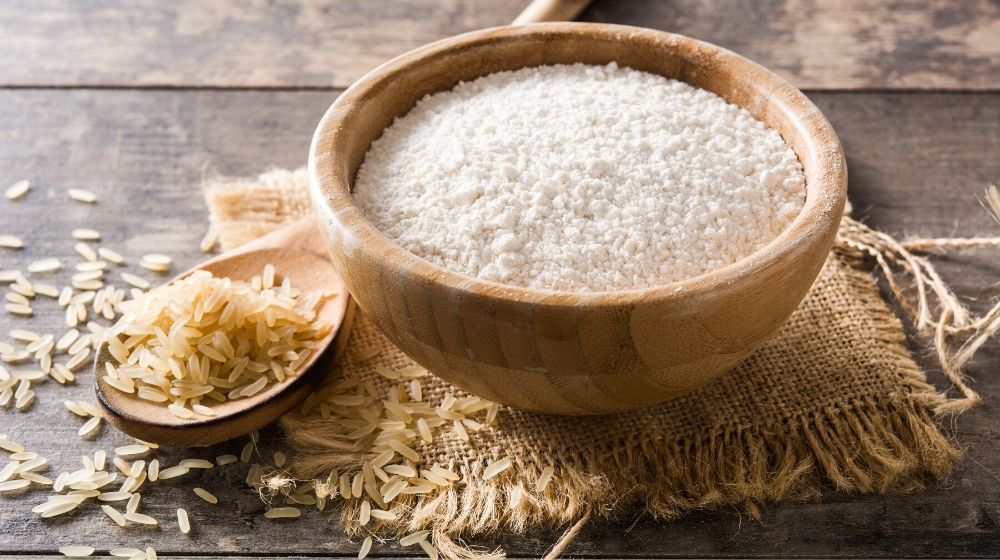
Rice flour is another typical replacement that I can offer. In Asian culture, this flour is commonly used as the central ingredient in noodles, soups, and even sweets. It’s made by extracting refined white starch from finely milled rice.
It’s also gluten-free, making it ideal for anyone attempting to avoid gluten-containing foods. Rice flour, unlike cornstarch, can be diluted with either hot or cold water.
Furthermore, rice flour does not change color when mixed with water, unlike maize flour. As a result, you won’t have to worry when adding it to clear soups or broth.
You’ll need 2 tbsp rice flour to replace 1 tbsp cornflour to reach the same consistency as cornflour.
This technique can be used to thicken soups in particular. Because it lacks the crispness of cornflour, I don’t suggest it for deep frying.
Anthony’s Brown Rice Flour or Regular Rice Flour are two options that I recommend. Brown rice flour is one of my favorites because it is less refined and hence healthier.
No. 3 Flour made of wheat
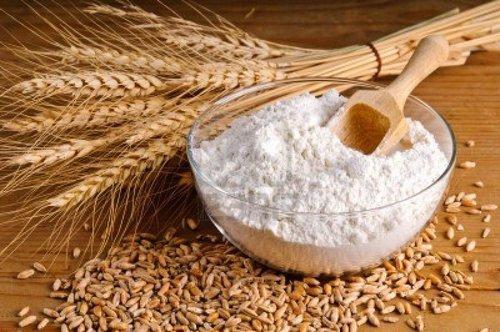
Wheat flour is derived from wheat that has been finely milled. It is a nutrient-dense superfood since it includes a lot of protein and fiber. The main drawback includes gluten, so those with celiac disease should avoid it.
Because it’s whole grain, you’ll need to double the amount of cornflour to replace it. Two tablespoons of wheat flour can be substituted for one tablespoon of cornflour when thickening soups and stews. To avoid lumps in your soups, mix a paste with cold water.
I generally make corn flour tortillas, but I use wheat flour instead when I don’t have any. I make at least 10-15 flour tortillas using the same 2-cup wheat flour ratio.
Usually, I make this with King Arthur White Whole Wheat Multi-Purpose Flour. It’s a dependable brand for flours and even seeds, and I strongly suggest it.
No. 4 Flour from potatoes
Freshly crushed potatoes are used to make potato flour, then dried to produce the white starch. Potatoes, unlike wheat, are not a complete grain and so do not contain gluten.
Calorie-conscious people should consume this starch in moderation because it includes a lot of carbs and lipids.
Potato tubers, for example, absorb much water. So add them later in the cooking process if you’re trying to utilize them as a thickening agent in soups and stews. When added earlier, the soup may become overly thick. Furthermore, heating it for an extended period may cause it to break down and lose its thickening properties.
When thickening soups, 1 tbsp potato flour can be used instead of 1 tbsp cornflour. In addition to breading meats and vegetables, potato flour provides flavor to the dish. For flour goods, I still suggest Bob’s Red Mill.
No. 5 Flour (all-purpose)
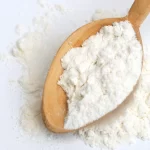
All-purpose flour is commonly used in baked items such as bread and pastries. That’s why this option is cut because it’s impossible to imagine a kitchen without it.
All-purpose flour is made from wheat grains with their brown coating removed. Because it is incredibly refined, it is white.
All-purpose flour can be used for deep frying and as a soup thickener. When used as a coating for fried foods, the flavor and texture change. Compared to corn flours’ light and crispier effect, the dish will taste chewier and thicker.
To replace it with cornflour while thickening soups, you’ll need to double the amount. 1 tbsp cornflour can be replaced with 2 tbsp all-purpose flour.
I recommend White Lily All-Purpose Flour for this recipe. It’s not only inexpensive, but it’s also a dependable baking and culinary brand.
No. 6 Self-rising flour is a type of flour that is designed to rise on its own

All-purpose flour, baking powder, and salt make up self-rising flour. It’s commonly used to make biscuits and quick bread also.
It can be used as a corn flour alternative, a thickening agent, and a coating for fried foods. Cornflour can be replaced 1:1 with self-rising flour in baking recipes and coating fried foods.
You should use self-rising flour in a 2:1 ratio instead of cornflour (2 parts of self-rising flour for 1 part of cornflour) in sauces, soups, and other dishes.
When baking with self-rising flour, salt and baking powder should be reduced. Because there are 14 teaspoons of salt and 12 teaspoons of baking powder in a cup of self-rising flour.
No. 7 Tapioca flour
Stews, soups, sauces, gravies, baked products, and various other sweet and savory dishes all require tapioca flour.
When you require a thickening ingredient in a recipe, tapioca flour can be used instead of maize flour. Tapioca flour has an excellent thickening ability. In a 1:1 ratio, replace cornflour with tapioca flour.
No. 8 Powdered arrowroot
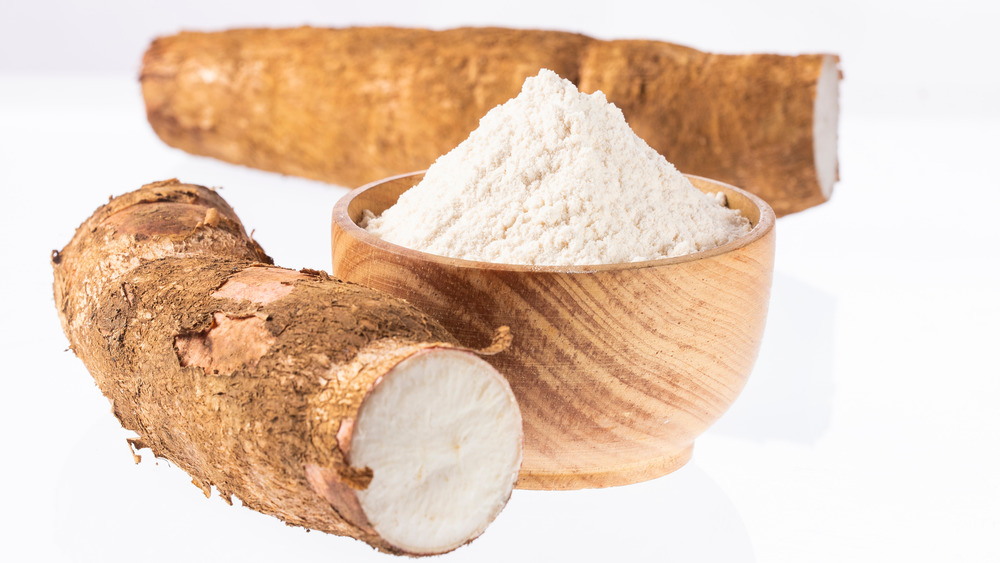
Arrowroot powder can also be used in place of cornflour. It’s used to thicken sauces, gravies, soups, fruit fillings, jellies, and non-dairy sweets and coat meat and tofu before frying.
If you’re using arrowroot powder as a thickener, form a slurry with water and add it near the end of the cooking process.
Because it will clump and not blend with the other ingredients if added immediately to the sauce or soup. One tablespoon of cornflour can be replaced with two teaspoons of arrowroot powder.
No. 9 Cornmeal
Cornmeal is maize that has been ground to a fine or coarse texture. Corn flour and cornmeal are both corn products. However, corn flour has a different texture than cornmeal because corn flour is finely ground.
Masa harina is a dried, ground dough formed from corn kernels that have been soaked in calcium hydroxide and pulverized before usage.
It’s used in various Mexican dishes, including tortillas, gorditas, and tamales. Masa harina has a fine texture and a nutty, somewhat acidic flavor. It can be made into a dough with just a little water.
If you’re going to use cornmeal instead of cornflour, make sure it’s finely ground cornmeal. In baking and cooking, replace cornflour with finely ground cornmeal in a 1:1 ratio.
No. 10 Masa harina
It can be used as a thickener in sauces, soups, and stews and as a substitute for cornflour blended with other types of flour in baked goods.
Prepare a slurry with it and add it to the dish you’re making to keep it from lumping. Your dishes will have a nutty and somewhat tangy flavor. In a 1:1 ratio, replace cornflour with masa harina and add more if necessary.
No. 11 Sorghum flour
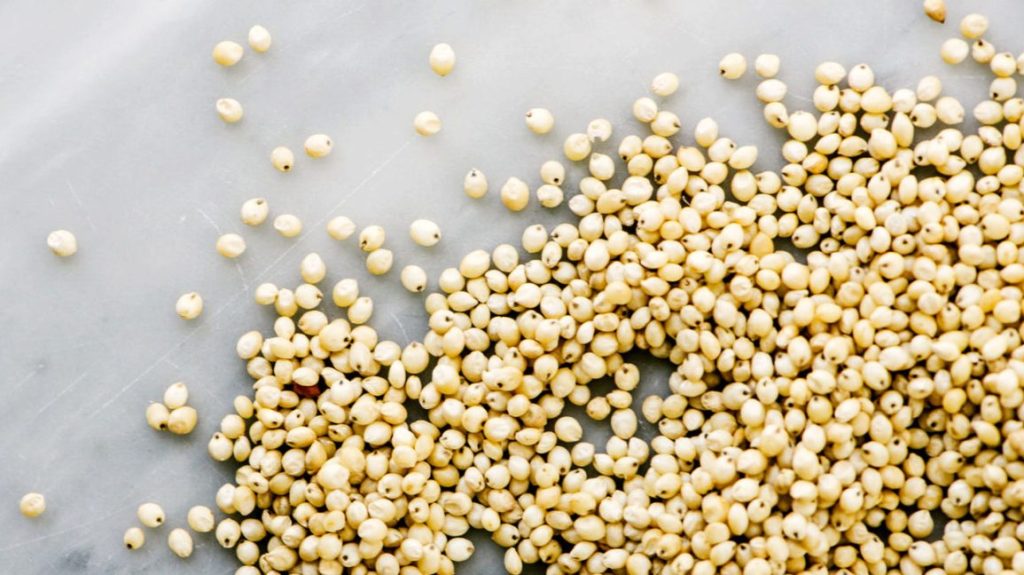
Sorghum flour has a mild, sweet flavor and is commonly used in bread, cakes, cookies, and other baked products.
This gluten-free flour can be used as a corn flour substitute in baked items and as a thickening agent in sauces, stews, and soups.
Blender with other gluten-free flour and add a binder to get a better texture when using sorghum flour in baked items. Substitute sorghum flour for cornflour in a 1:1 ratio.
No. 12 Ground flaxseed
Ground flaxseeds are another product that can be used as a corn flour alternative. The nutty flavor of these little brown or yellow seeds can be utilized as a thickening agent in your meals.
Ground flaxseeds can be used in various dishes, including stews, soups, sauces, puddings, and other sweet and savory dishes. Combining four tablespoons of water with one tablespoon of ground flaxseeds is an alternative to two tablespoons of cornflour.
Corn flour as a frying substitute
Potato flour, cornstarch, or self-rising flour are some of the best frying substitutes if you don’t have cornflour.
Thickening corn flour substitute
Cornflour can be replaced with a variety of thickening alternatives. Corn starch, rice flour, wheat flour, all-purpose flour, tapioca flour, masa harina, sorghum flour, and ground flaxseeds are all acceptable ingredients.
Biscuits can be made without corn flour
Other types of flour, such as all-purpose flour, self-rising flour, or wheat flour, can be used to replace cornflour in biscuits. Your biscuits will be different in flavor and texture, but they will still be delicious.
In Manchurian, what can I use instead of cornflour?
The Manchurian cuisine includes corn flour as one of its ingredients. If you don’t have corn flour on hand, you can substitute gram flour or maida, which is white wheat flour.
Your meal will be lovely and crispy as a result of them. Keep in mind that self-rising flour contains baking powder and salt, both of which might make your dish saltier and fluffier.
One of the ingredients of the Manchurian dish is maida flour. Gram flour is a form of chickpea flour that is ground. On the other hand, maida is an Indian refined and starchy flour that is similar to cake flour.
As a result, you can use more as a corn flour substitute for both the Manchurian balls and the sauce thickener.
Is it possible to substitute plain flour for corn flour?
Corn flour can be substituted in your recipes with plain or all-purpose flour. It can be used as a thickening, in baked goods, and as a frying food coating.
When maize flour is utilized, the texture and flavor of the finished items will be different. In your recipes, one tablespoon of cornflour can be replaced with two teaspoons of ordinary flour.
The best corn flour substitute is my personal favorite.
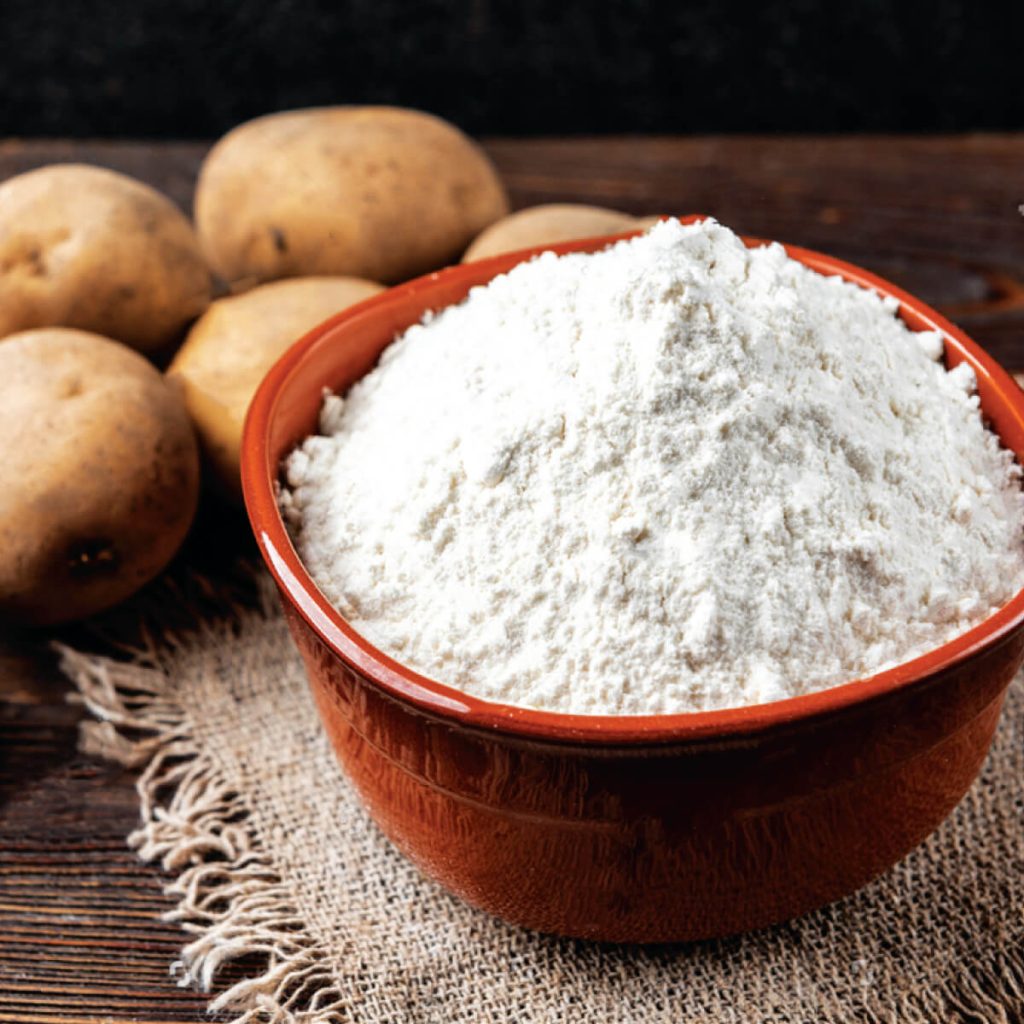
I’d go with cornstarch and potato flour if I had to choose between them.
Deep-fried foods are my favorite. I typically use cornstarch or potato flour while frying meats and vegetables. Because they’re both lights, they’re ideal for breading and frying.
It also adds flavor to fried foods, so I don’t need to use as much salt or seasoning. One of the “must-haves” while cooking fried meals is the airy and crunchy texture.
Both are excellent in soups and stews. Because you can add cornstarch whenever you want, it’s a simple repair. Furthermore, it is dilutable with cold water.
Because of its propensity to absorb moisture, potato flour is the most acceptable thickening agent. I proceed with caution because it readily breaks down when cooked for an extended period.
I don’t recommend both of them for baking because they don’t fulfill the same purpose as “good old all-purpose flour.” When baking, I would still use all-purpose or wheat flour. Cornflour is thicker than flour; thus, I rarely use it in baking. Cornbreads and corn tortillas are the only things I use them for.
That’s it! We hope that this article clarified your cornflour issues and that these substitutes will come in handy the next time you run out of cornflour.











